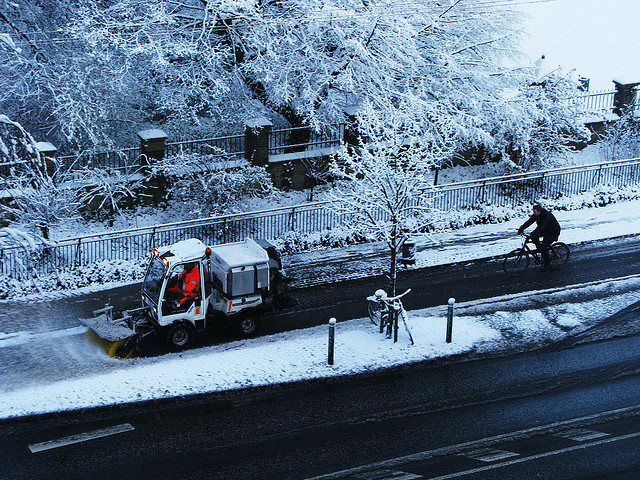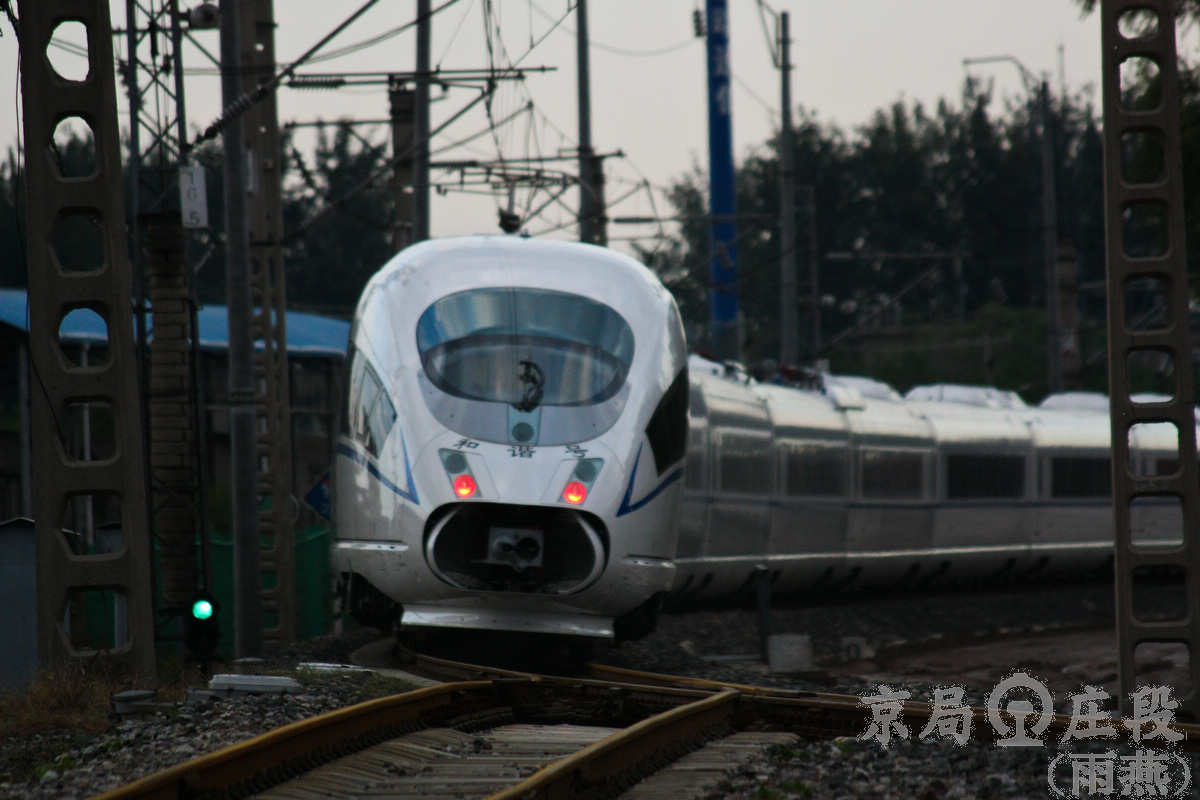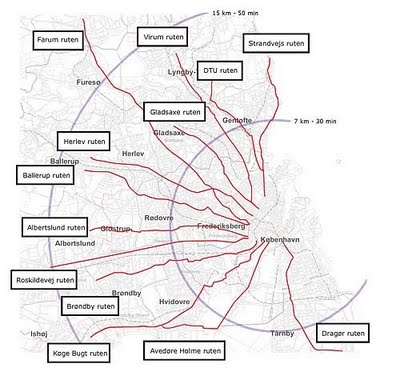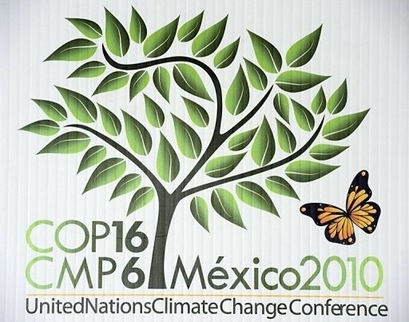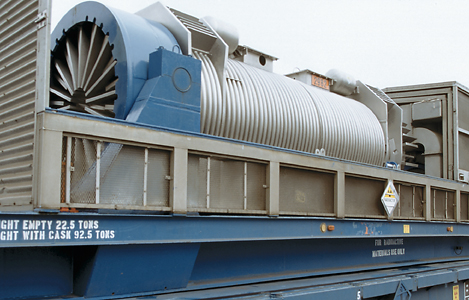Recent Events
FHWA Selects Vulnerability and Risk Assessment Pilot Locations. FHWA has selected five applicants to pilot a draft conceptual model for conducting climate change vulnerability and risk assessment of transportation infrastructure. The Metropolitan Transportation Commission (San Francisco Bay), New Jersey DOT/North Jersey Transportation Planning Authority (Coastal and Central New Jersey), Virginia DOT (Hampton Roads), Washington State DOT (State of Washington), and Oahu Metropolitan Planning Organization (Island of Oahu) were selected to conduct the pilots over the next year. Based on the feedback received through the pilots, FHWA will revise and finalize the model for national application.
FHWA Launches Beta Version of Sustainability Tool. The Sustainable Highways Self-Evaluation Tool can help transportation agencies make highway projects and programs more sustainable. The tool is modeled after similar evaluation systems, such as GreenRoads, GreenLites, and I-Last for roads, and LEEDs for buildings. It provides a practical tool for integrating sustainability best practices into transportation projects and programs. Climate change considerations (GHG emissions and climate effects) are incorporated as elements of the tool. This is a beta version of the tool, and the site is still under development, so it will evolve as additional components are added or updated. We encourage you to try out the website, and we welcome any feedback.
FHWA Summary of Climate Language in Transportation Plans posted. Climate Change – Model Language in Transportation Plans provides excerpts from various MPO and DOT transportation plans that illustrate how climate change considerations have been integrated into the documents. Agencies that are looking for ideas about how to incorporate climate change into their transportation plans could find the model language very useful.
Report Provides Estimates of GHG Emissions in Transportation Construction, Maintenance, and Operations Activities. This NCHRP 25-25 Task 58 “Quick-Turnaround” research includes a spreadsheet tool to provide estimates of GHG emissions from transportation agencies’ construction, maintenance, and operations activities. The research also includes a synthesis of current research on the topic and identifies research gaps. A TRB webinar presentation with the principal investigator of the project is scheduled for November 10 (see below).
DOT and EPA Propose GHG Standards for Truck and Buses. On October 25, NHTSA and EPA proposed the first-ever fuel economy and GHG emissions standards for medium- and heavy-duty trucks and buses. The new heavy-duty national program (or HD National Program) for model years 2014-2018 would potentially reduce GHG emissions by nearly 250 million metric tons over the life of the vehicles. The HD National Program was developed in response to President Obama’s memo to agency heads at DOT, DOE, EPA, and NHTSA on improving energy security issued in May. Much information on the proposal, including the Notice of Proposed Rulemaking, a fact sheet, a draft EIS, a draft regulatory impact analysis and more is available on the NHTSA’s Fuel Economy Website.
DOT and EPA Publish NOI on 2017-2025 CAFE and GHG Emissions Standards. In an October 13 Federal Register Notice, NHTSA and EPA published a joint Notice of Intent and to develop fuel economy standards for 2017-2025 model year vehicles and an accompanying technical assessment report. The NOI does not propose specific standards but is the first step in the longer rulemaking process and discusses key elements of the program. A final rule is expected by July 31, 2012. As with the rulemaking for model years 2010-2016, EPA and NHTSA have committed to work closely with the California Air Resources Board to coordinate requirements and allow for a single, nationwide fleet. The accompanying technical report includes an initial assessment of the expected technology costs, effectiveness, and lead time to implementation. It also includes assessments on electric vehicle and hydrogen infrastructure and impacts on the economy and auto manufacturing jobs. For more information, see NHTSA’s Fuel Economy Website.
USDOT Releases Sustainability Plan and Progress Report.USDOT has released its Strategic Sustainability Performance Plan, a required report on the agency’s progress implementing E.O. 13514. The plan establishes a goal of 12.3 percent reduction in GHG emissions by 2020. DOT identified three program areas to achieve sustainability goals listed in the plan: sustainable facilities and fleet, sustainable acquisition, and sustainable technology. Sustainability performance plans from other agencies are also available on the CEQ website.
Columbia Law School Creates Databases of Climate Change in EISs. Columbia Law School has compiled and posted two databases of recent environmental studies that include consideration of climate change impacts. The first includes EISs submitted under NEPA. The second includes EISs submitted under CEQA, California’s environmental act. The databases are searchable by project type, lead agency, and State.
EPA, DOT, and HUD Release Partnership Progress Report. This document reports on the first year of the HUD/DOT/EPA Interagency Partnership for Sustainable Communities. The agencies are coordinating investments and aligning policies with the goal to help create more livable communities. For example, DOT used EPA and HUD’s expertise in the review of applications for Recovery Act TIGER grants. Twenty-two of the projects were selected because they would increase transportation choice, promoting livability principles. DOT and HUD also teamed up for a joint TIGER II-Community Challenge Grant Program that will award up to $75 million to support local planning activities that integrate transportation, housing, and economic development. And FTA and HUD developed a Mixed-Income Transit Oriented Development Action Guide to assist local governments foster diverse housing choices near transit stations available to a mix of incomes. These efforts and more are detailed in the report.
Federal Climate Change Adaptation Task Force Releases Progress Report. On October 5, CEQ released the report: Progress Report of the Interagency Climate Change Adaptation Task Force: Recommended Actions in Support of a National Adaptation Strategy. The report discusses the role of the federal government in adapting to climate change, federal policy goals, and next steps. To implement a goal to encourage and mainstream adaptation planning across the federal government, the Task Force recommends federal agencies employ a flexible framework for agency adaptation planning:
- Set a mandate with clear objectives and metrics;
- Understand how climate is changing;
- Apply to mission and operations;
- Develop, prioritize, and implement actions;
- Evaluate and learn; and
- Build awareness and skills.
USDOT and FHWA are active in the Task Force. While FHWA has incorporated many elements of the flexible framework to its own activities, the Vulnerability and Risk Assessment Pilots discussed at the top of this newsletter are serving as FHWA’s pilot of the flexible framework. Read about all of the Task Force’s policy goals and recommended implementation strategies in the report.
State News
CAPCOA Releases Resource on Quantifying Greenhouse Gas Mitigation Measures. The California Air Pollution Control Officers Association released this Resource for Local Government to Assess Emissions Reductions from Greenhouse Gas Mitigation Measures. It includes calculation methodologies for 50 transportation measures. Information includes a range of effectiveness, detailed description, applicability (urban, suburban, rural), calculation method, inputs, assumptions, examples, and literature references for the measures.
Announcements
Seeking Pilot Projects for Sustainable Transportation Design Tool. The Sustainable Transportation Access Rating System (STARS) is a life-cycle, performance-based design and rating system helping transportation projects to improve access, reduce energy use and greenhouse gas emissions and improve cost-effectiveness. STARS is seeking pilot projects to testVersion 1.0.STARS was developed by a partnership between the North American Sustainable Transportation Council, Portland (OR) Bureau of Transportation and the Santa Cruz County Regional Transportation Commission. For more information on STARS please contact Peter Hurley, Portland Bureau of Transportation Project Manager, at 503.823.5007 or peter.t.hurley@portlandoregon.gov.
AASHTO/FHWA Webinar: “How can state DOTs communicate climate change and energy challenges to the public?” Thursday, December 2 at 2:00-3:30 p.m. ET. Edward Maibach of the Center for Climate Change Communication at George Mason University will give a presentation on “Global Warming’s Six Americas,” a market segmentation analysis of different groups of Americans and their views on climate change: Alarmed; Concerned; Cautious; Disengaged: Doubtful; and Dismissive. Based on an awareness of different views about climate change, the webinar will focus on ways that state DOTs and other transportation organizations can communicate with the public about climate change and energy issues. The webinar will also include discussion of the state DOT role in communicating about climate change with other state and Federal agencies. Registration is free and open to all.
If you have any suggestions for inclusion in future issues of Transportation and Climate Change News, or if someone forwarded this newsletter to you and you’d like to receive it directly in the future, please send your suggestions or request to Becky Lupes at Rebecca.Lupes@dot.gov




